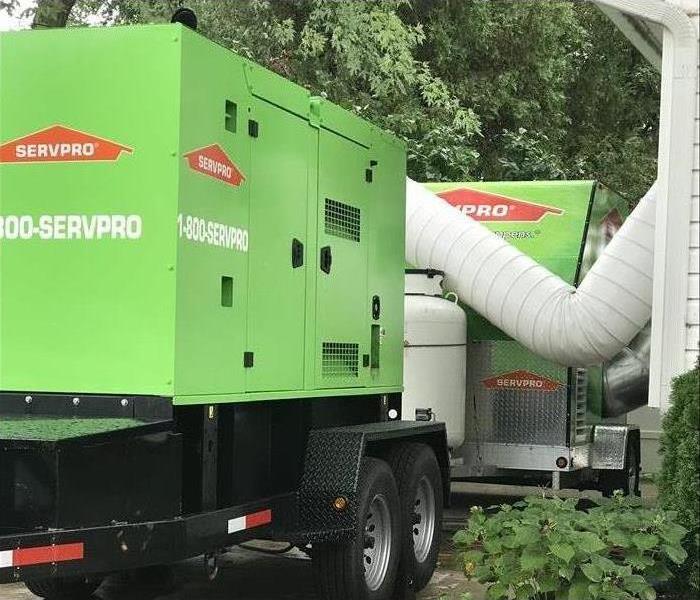We Act Fast In Wilmington After A Flood
3/12/2020 (Permalink)
 We used our desiccant and generator to work together in order to dry the property after a flood. We are available 24/7 to prevent further damage.
We used our desiccant and generator to work together in order to dry the property after a flood. We are available 24/7 to prevent further damage.
Steps That Help In Controlling Microbial Growth after Flood Damage Incidents in Wilmington
Microbial growth in properties is usual if the conditions are favorable. High moisture levels in an indoor environment encourage such growth. Therefore, after an incident of flood damage, there is a need to take steps to curb such growth.
Although water extraction is expected after flood damage incidents in Wilmington, taking too long can lead to microbial growth. Such growths start within 24-48 hours, so there is a need to expedite extraction and start drying procedures within this timeframe. Our SERVPRO technicians try to achieve this by using a variety of extractors and pumps.
Slowing down microbial growth is also a crucial strategy, especially when it is impossible to complete extraction and drying within a reasonable timeframe. Spraying antimicrobial agents can help stop or limit the growth of microorganisms in the affected areas providing the opportunity to carry out other restoration steps. The term antimicrobial agent refers to different chemical agents, including fungicides, sporicides, and mildewcides, among others.
When using chemical agents to control microbial growth, there is a need to ensure proper exposure for maximum effectiveness. Our restoration technicians ensure this by mixing products according to dilution ratios recommended by the manufacturer. We also use quantities and methods, which allow the solution to reach all the contaminated surfaces or materials. Allowing sufficient dwell time and maintaining the right pH and temperature levels guarantee optimal performance from the chemical agent.
Microbial growth is usually worse in some sections of a flood-damaged property, including subfloors and wall cavities. Our SERVPRO technicians focus on such areas when applying antimicrobial agents. We apply them on wall bottom plates, tackless strip, and subfloors, where the presence of organic materials or concentration of moisture leads to widespread microbial development and bad odor. Proper drying of these areas helps eliminate chances of growth. We use dehumidifiers to extract all excess moisture.
Microbial growth is likely after flooding incidents. Call SERVPRO of Brandywine / Wilmington at (302) 762-8080 to help take the necessary step and stop such development before it gets out of hand. We're Faster To Any Size Disaster.
See more about Wilmington.






 24/7 Emergency Service
24/7 Emergency Service